Hi—
Do you want to know how to make date syrup? I’ll share the simple instructions below; all you need is dates and water (and a few kitchen tools).
Before I get to that, I hope you’ll indulge me as I drop some facts about dates, date sugar (a.k.a. date powder), and date syrup.
Finally, I’ve been working on a version of my “Best Chocolate Chip Cookie Ever” that is—don’t let this scare you; they’re very good—vegan-friendly, whole grain and gluten-free, and sweetened with date sugar and maple syrup (Stupidly, given the theme of today’s e-mail, in all my tests, I didn’t try swapping in date syrup for the maple syrup, but I imagine that works very well, albeit while producing a darker-hued cookie). I’ll share the recipe for “My Best Vegan CC Cookies” here in my “p.s.” supplement*.
A couple of things I’ve laughed with or sung along with lately:
Jesse Eisenberg as a guest on both Conan O’Brien Needs a Friend and Fresh Air;
Soda Blonde’s album Small Talk.
As always, thank you for reading this. Have a good weekend. Talk to you soon.
Brian
*Formal Assignment P.S. is for paid subscribers. It’s just $6 a month—or even less for an annual subscription.
DATES, DATE SUGAR, and DATE SYRUP
Dates grow on the date palm (Phoenix dactylifera), which is a member of the same family as the coconut tree. The world’s top producers of the fruit are (in descending order) Egypt, Saudi Arabia, Iran, Algeria, Iraq, Pakistan, Sudan, Oman, UAE, and Tunisia1. Here is some background about the date palm from my “Date Fruit File” in Good & Sweet:
The date palm has its origins on the land that cradles the Persian Gulf, where it has been cultivated for thousands of years… Though the original period of the date palm’s cultivation can’t be [precisely] pinpointed [—nor has its wild ancestor been identified—], it is certain that it was one of the first fruit trees to be domesticated. Surely owing to its fruitful generosity and its impressive figure—the date palm can grow to a height of 75 feet and can yield hundreds of pounds of fruit annually—it has long been celebrated and reverentially represented in art, from Egyptian tombs to the Bible and the Quran.
This fun video shows you, in under two minutes, how a date stone grows from seed to sapling over the course of one and a half years: “Date Palm Time-lapse | 1.5 Years”
WHAT GIVES DATES THEIR FLAVOR?
Comprising 67% sugar, ripened and sun-dried dates are remarkably sweet. This sweetness is not without flavor; “dates typically carry a mix of fruity esters and benzenoids”—classes of volatile molecules—”suggesting honey, almond extract, hay, and even cinnamon; some varieties also emit citrusy and floral terpenoids.”2 I can tell you that after dates simmered on the stove for over an hour this week, the aroma in my kitchen was strongly suggestive of coconut.
THE HARVEST
In the United States, dates are grown mostly in Southern California and Arizona, where they are harvested mainly in September, which is also the peak of the harvesting season for many of the world’s top date producers. I think it’s safe to say that most of us have never had a truly fresh date; the dark wrinkled ones we eat have been left to partially dry out while still on the tree, concentrating their sugar and making them easy to transport and store for long periods.3 (While visiting Los Angeles in the fall of 2022, I tasted a fresh yellow date at the Hollywood Farmers Market. It was crisp and astringent, like an unripe persimmon.)
Here’s a video that offers a look at a date palm farm and the (old-fashioned) harvesting process: “Dates - How Do They Do It?”
WHAT’S DATE SUGAR?
To answer this question, I spoke with my friend Sylvie Charles, the founder of Just Date, whose products include date sugar, date syrup, and date-sweetened chocolate chips.
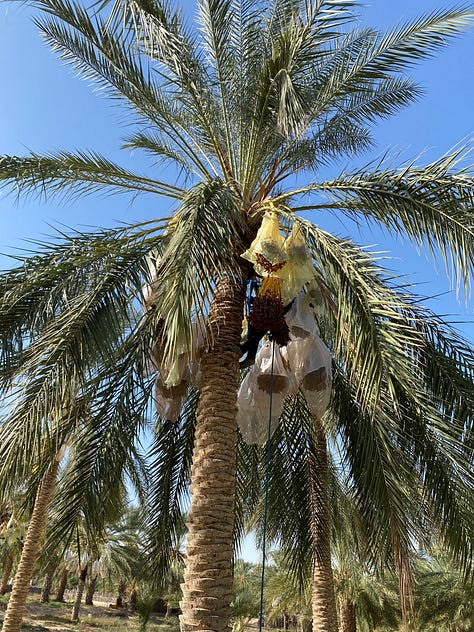
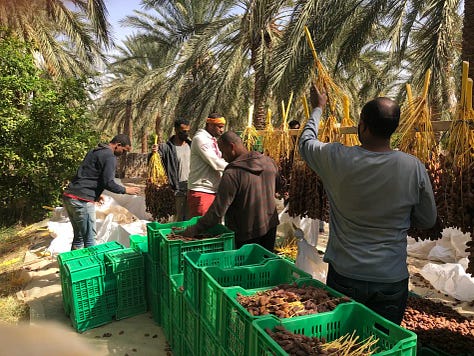
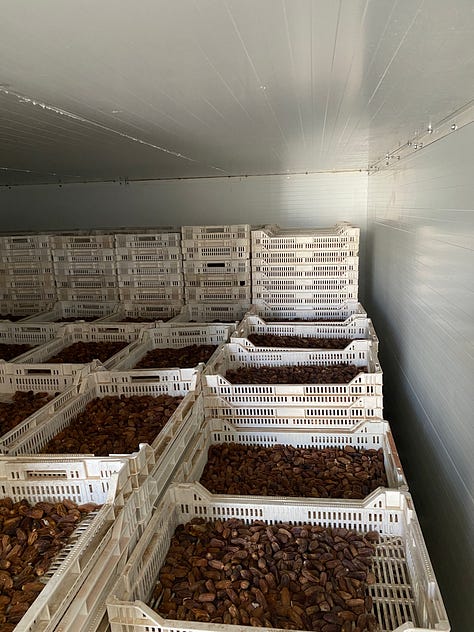
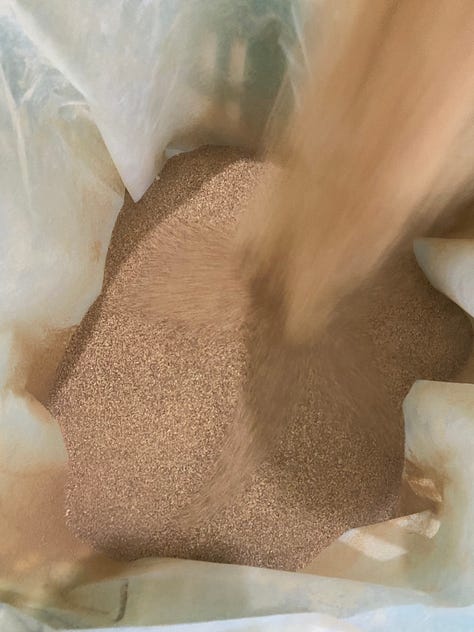

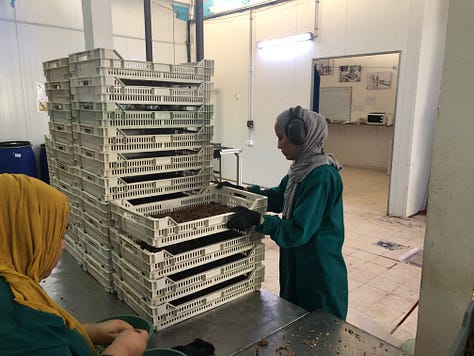
Sylvie confirmed what I tell people any chance I get: date sugar is just whole dates, pitted and dried, ground to a powder. The process, Sylvie said, is “harvest, dehydration, grind. It’s pretty simple, which is why I love it; it’s a minimally processed product.” That means date “sugar”—which would more accurately be called date powder—contains all of the fiber and minerals of a whole date, making it unique from most, if not all, of the near-pure sugars we refer to as “sugars.” (Table sugar has a glycemic index of about 65, Sylvie told me, whereas date sugar’s is in the mid-40s.)
Just Date’s organic date sugar is produced in partnership with a farm in Tunisia that was started by a former NGO director who “fell in love with dates” and saw farming and processing as a way “to employ more people [especially women, who make up about 80% of their staff] year-round in the area.” Just Date favors the kentichi variety of the fruit, as it yields a powder that is light in color—a pale beige rather than deep tan, but has to supplement with other varieties in order to meet demand. The dates that end up as powder are “up-cycled”; deemed not pretty enough to sell as whole dates, they’re the specimens “that would otherwise be [used as] a low-cost animal feed,” said Sylvie. The dehydrators used at the plant are completely solar-powered, to take advantage of the area’s 300 sunny days per year.
WHAT’S DATE SYRUP?
While you can buy date syrup, you can also easily make it; it’s much simpler and requires less equipment than date sugar. Sylvie explained that dates get “simmered with water…until the dates become super soft, and then you press the dates through a…mesh,” which leaves you with a dark amber-colored juice that is then reduced to a thicker syrup. At home (as I’ll detail in the recipe below), this is done with a pot and a nut-milk bag or cheesecloth. “On the industrial level,” Sylvie told me, Just Date uses a huge kettle, a “giant mesh,” and an evaporator. Whereas date sugar makes use of the whole (pitted) dates, the pressing stage of date syrup production leaves behind a mass of fiber-rich date pulp. This is essentially the reason that date syrup, unlike date sugar (which doesn’t fully dissolve), can easily combine with another liquid.
Here’s how to make it yourself. . .
RECIPE: DATE SYRUP
Date syrup has a molasses-like flavor and a rich dark amber color. I especially like it in combination with tahini and Maldon salt as a topping on vanilla ice cream.
---
INGREDIENTS:
---
500g dates, pitted and halved
1000g water
---
INSTRUCTIONS:
---
In a large, heavy-bottomed pot, bring the dates and water to a boil over high heat. Cover the pot, reduce the heat to low, and simmer gently for 1 1/2 hours; the dates should be very soft, and the fruit and liquid should have a uniformly reddish-brown color. Let cool to room temperature or just slightly warmer.
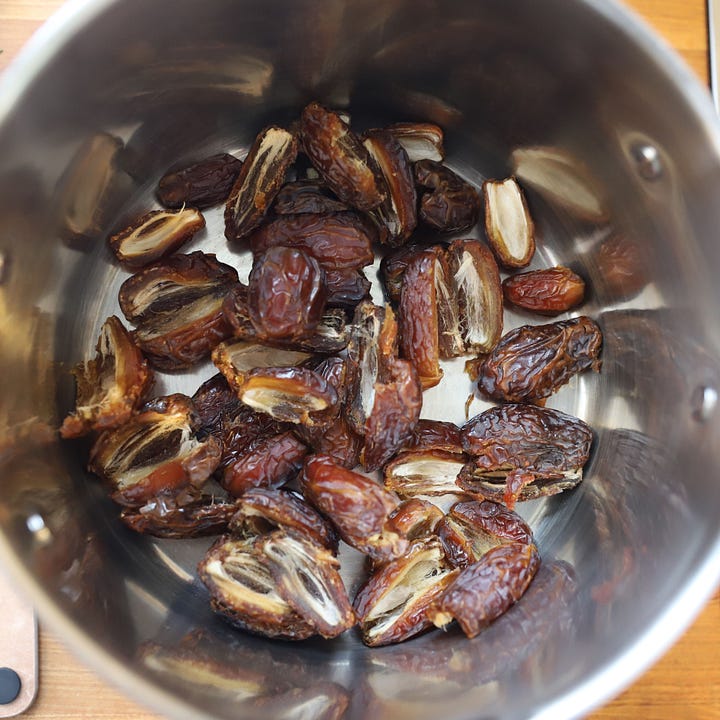
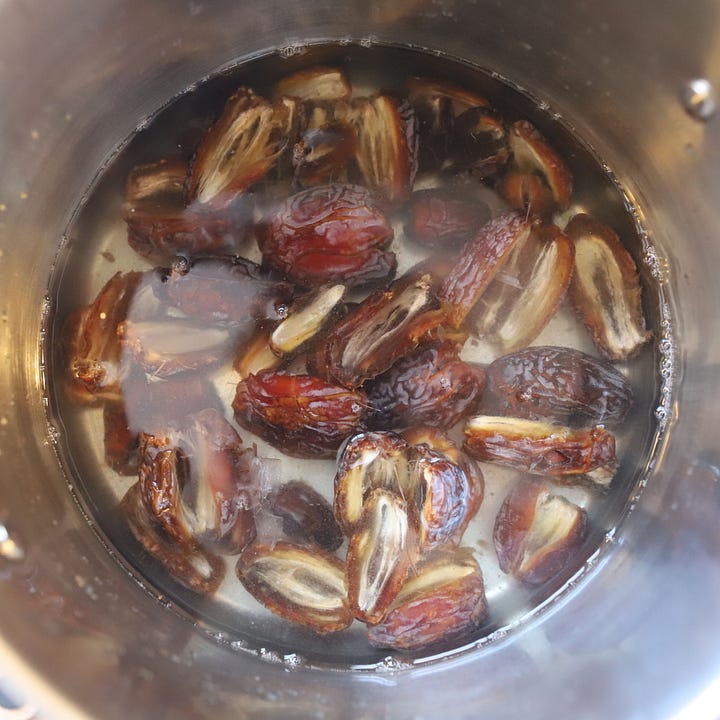
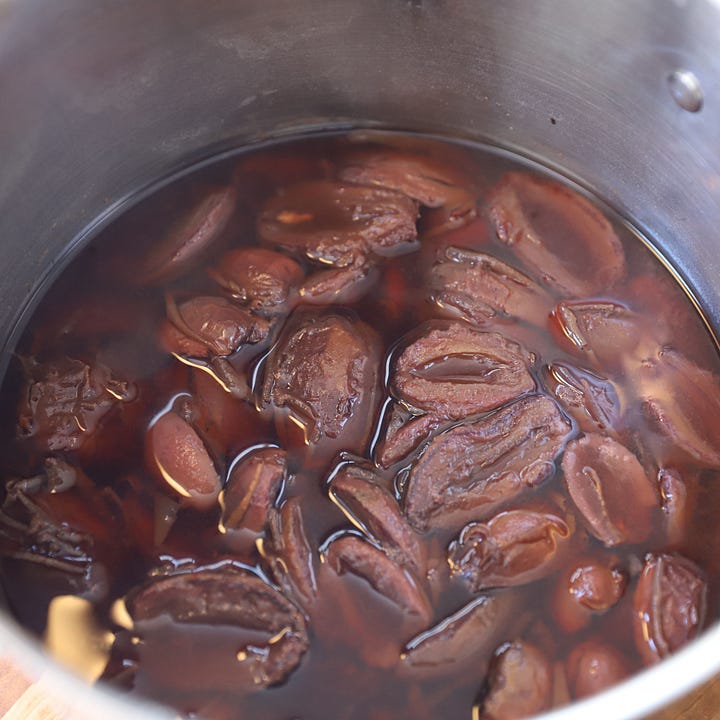
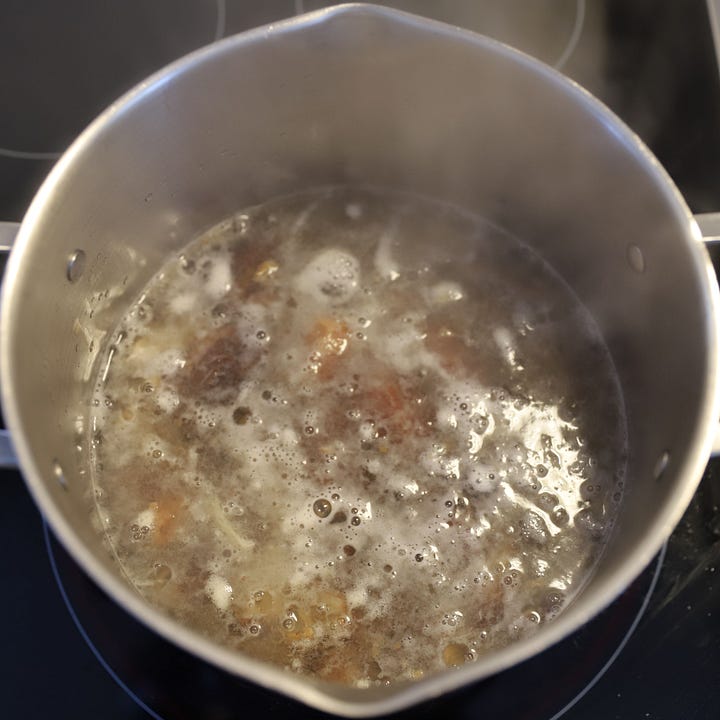
Using either a nut-milk bag or a cheesecloth-lined sieve, squeeze as much juice as possible from the date pulp into a large bowl. Clean the pot of debris and return the date juice to the pot. Discard (compost) the pulp.
[PHOTO 4-UP]
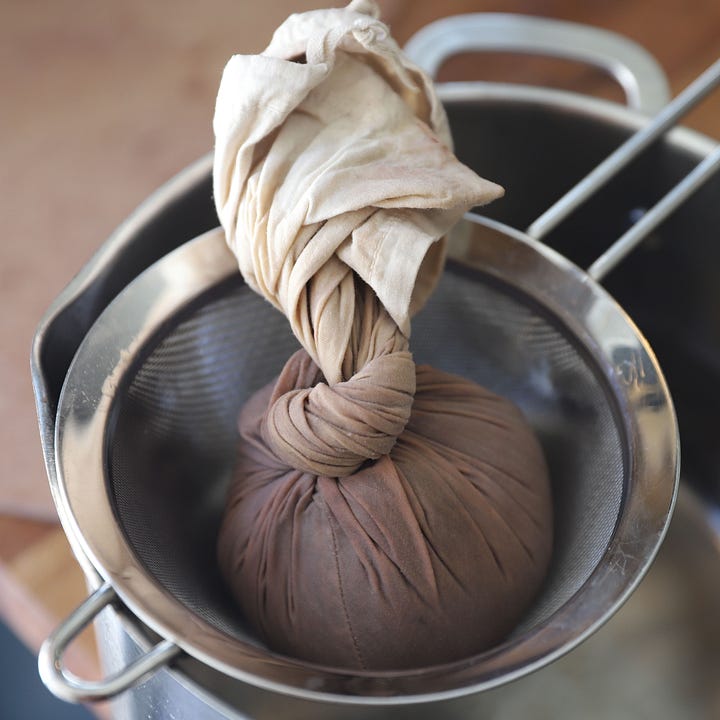
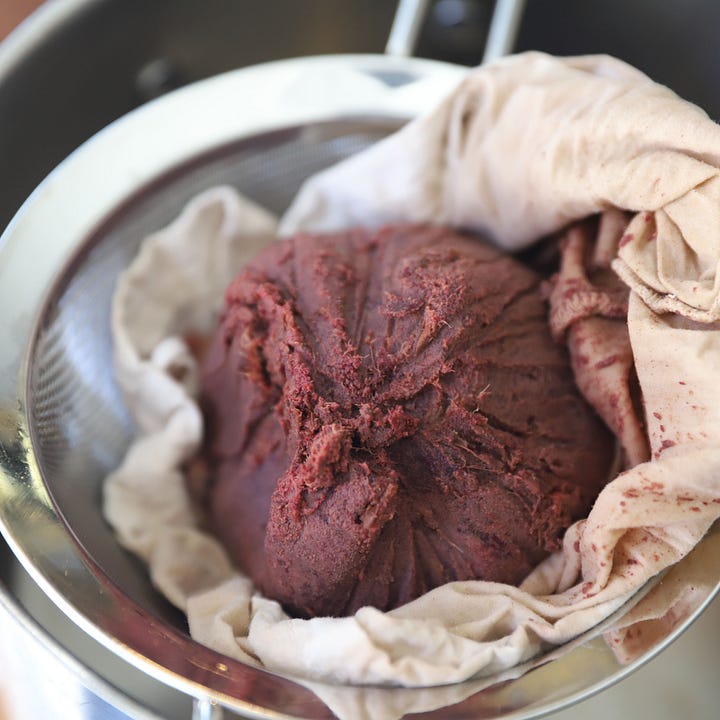
Over medium-high heat, bring the juice to a boil. Adjust the temperature to maintain a boil until the juice is reduced by half; it should coat a spoon. Let cool, cover and refrigerate. The syrup should keep well for months.
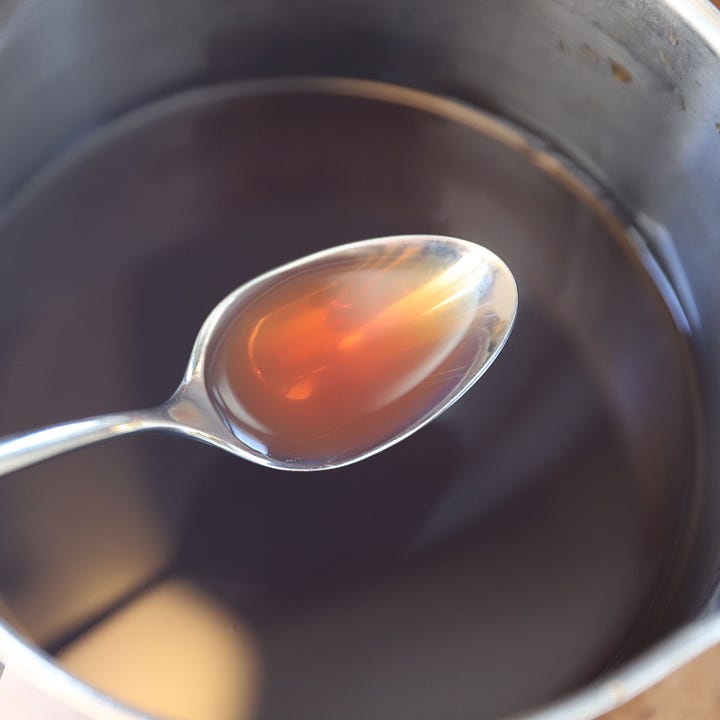
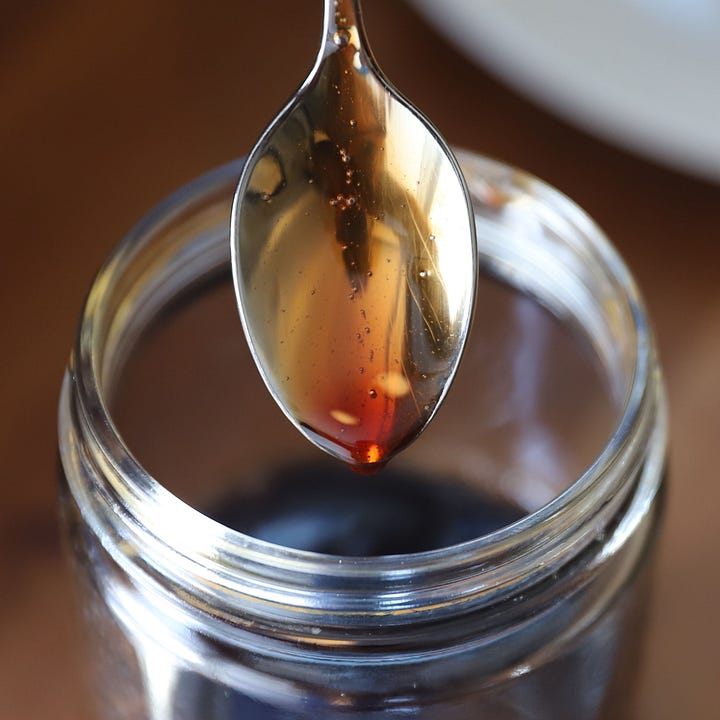
Remember, I’m also sharing the recipe for “My Best Vegan CC Cookies” today—in which date sugar plays a part—here in my “p.s.” supplement.
https://www.fao.org/faostat/en/#data/QCL/visualize
McGee, Harold. Nose Dive: A Field Guide to the World's Smells. United Kingdom, Penguin Publishing Group, 2020.
adapted from Good & Sweet, by me



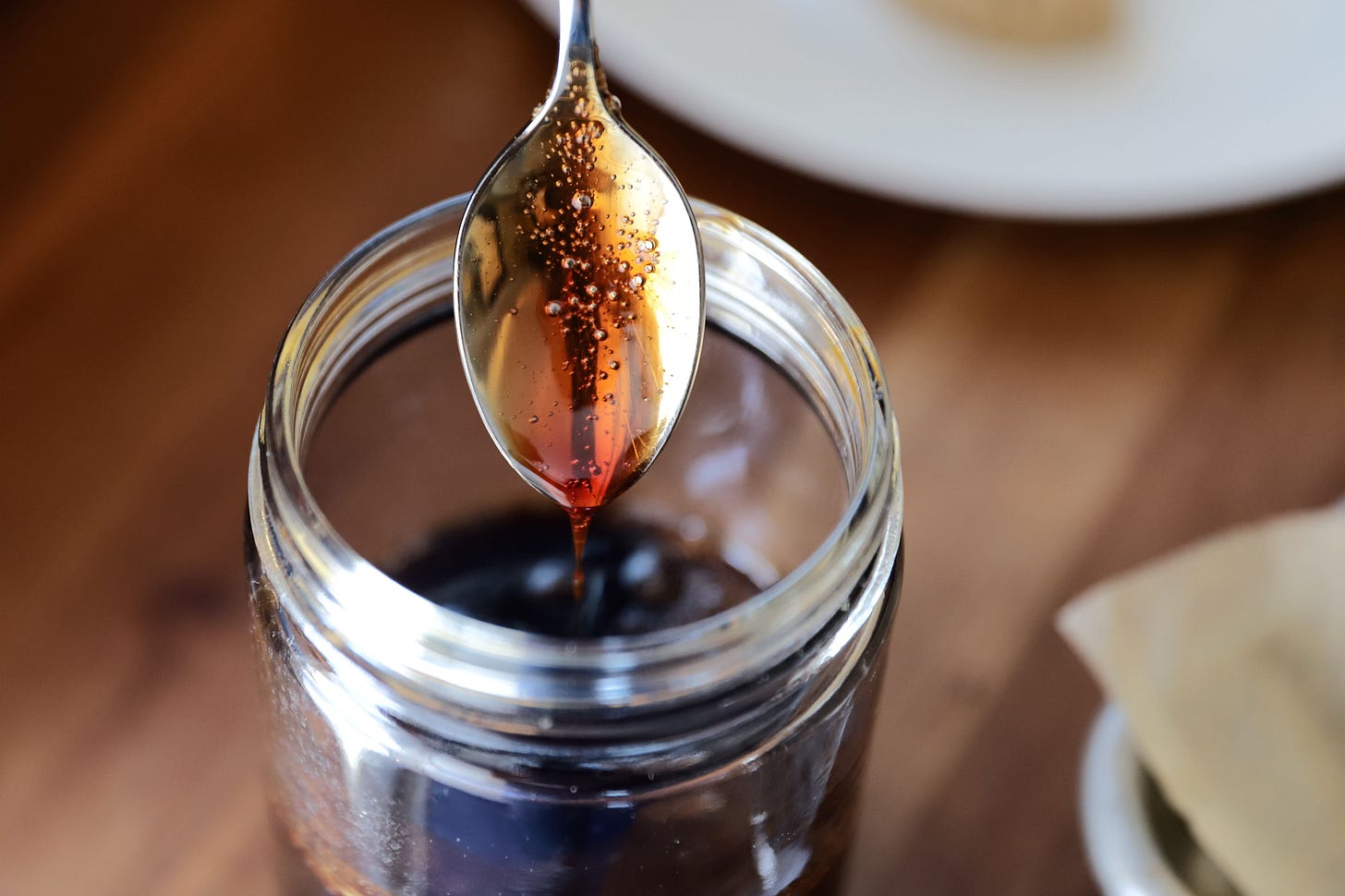
Brian, I love how much I learn whenever I read your newsletter. Thank you for sharing all of your amazing research with us here!
Thank you for this interesting article. In Israel date syrup is known as Silan and is popular for sweet and savory dishes.
Is there nothing to do with the date pulp besides compost?